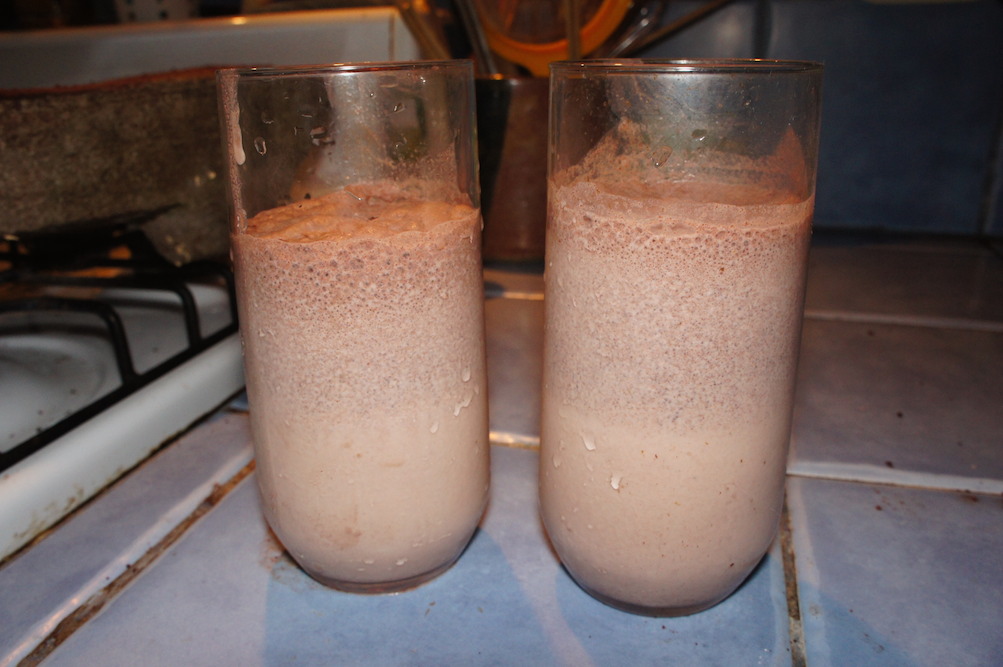
How to Make Chocolate Milk, From Scratch
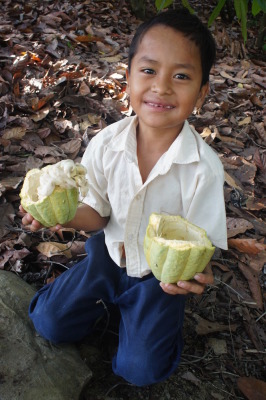
I’m obsessed with chocolate. I guess lots of people say this, but I feel like I’m worse than others. Barely a day goes by without me digging in the cupboard for some dark chocolate, ideally Belgian and 72%. Since I also have a thing for making stuff from scratch, I was very interested to learn about making chocolate, and in particular, whether I could make chocolate at home.
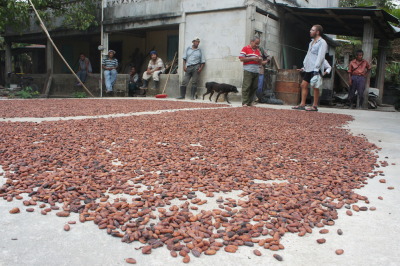
Two years ago while cycling through Central America, we took a chocolate making workshop in Nicaragua, and then another one in Guatemala. Then, in Belize, we cycled into a small Maya village named San Antonio, where a young kid climbed up a cocoa tree to pick us some fruit, which he then cracked open and we ate the sweet pulp surrounding the bitter seeds. Then we cycled past a family drying cocoa beans on a concrete slab in front of their house: they asked us in and we had some chicken soup followed by a spicy chocolate drink they had made. Continuing our ride in Belize, we stopped at all the little chocolate factories we could find, and there were about four or five of them, amazingly making up to 100 superb chocolate bars a day, from scratch, in a space no larger than a North American kitchen.

The little chocolate factories were open, and we were usually shown around, and they explained the process step by step. I quickly realized that there is one critical stage in the chocolate making process which cannot be easily done at home: “conching“, which consists of rotating the cocoa powder at high speed, passing it in between rollers, thereby grounding it and redistributing the cocoa oil. Without conching, the final product would be sandy and make for unsatisfying chocolate. Luckily, there is a way out: one can make an excellent chocolate milk from scratch at home. Chocolate milk has unfortunately come to be considered a kid’s drink, and is not taken as seriously as coffee, although it really should.

In Vancouver, where we currently live, I sometimes make the mistake of ordering a hot chocolate at a cafe. After all, I have to order something, and I shy away from coffee. Most often it’s served too cold – one could sip it on the spot, instead of arriving steaming hot, allowing the customer to sip it slowly as it cools. I guess it’s the American way – drink up and get on with life. Not to mention the yucky syrup they often use to give it the chocolate flavour. Then there’s the issue of the balance between the chocolate and the sweetness: most hot chocolate is way too sweet and not chocolatey enough. Tim Horton’s is one of the worst, but Starbucks isn’t too good either – although at Blendz you can get a pretty decent one – order the dark Belgian hot chocolate, but make sure to ask for it to be “extra hot”.
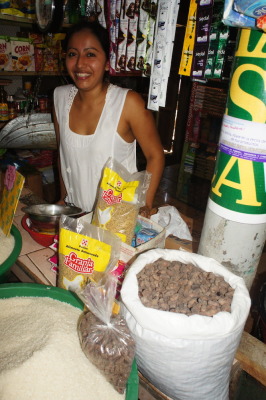
Anyway, like with many things, if you want the real deal, you need to do it yourself, at home, and it’s not hard, nor does it require any specialty equipment. The crux is finding cocoa beans, which you might be able to find at your local specialty store, or online. We happen to currently be in Nicaragua for several weeks, where cocoa beans can conveniently be bought easily and cheaply at the market, and “fresco de cacao” is a popular drink, enjoyed by everyone, adults and children alike.

By roasting and grinding the beans on the spot, just before using them, you get maximum flavour and smell, just like with coffee. In addition, you are getting the full content of the bean, including the valuable and nutritious cocoa butter.
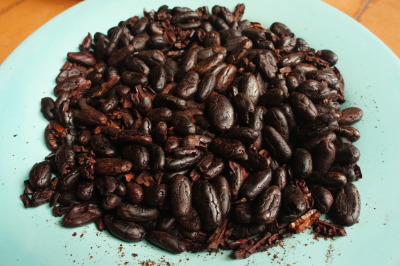
Chocolate Milk From Scratch
About 150g cocoa beans (usually dried and fermented but not roasted or peeled)
A pinch of cinnamon
1 teaspoon of vanilla extract (or better: one vanilla bean)
1.5 liters of Milk
Honey
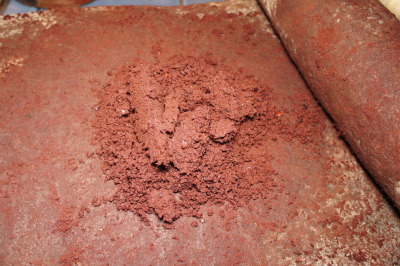
1. Roast the beans. I prefer to roast the beans in a frying pan or pot on the stove, since it allows easier access to stir them and make sure they are not burning, but they can be roasted in an oven or a toaster oven. Turn the pan with the beans in it to medium heat. Once it is hot, make sure to stir the beans frequently. You will know they are ready once they start popping like popcorn and there is a smell of chocolate in the air. If they smell burnt or are going black, the heat might have been too high or you weren’t stirring enough or perhaps you left them on too long.
2. Peel the beans. Cool the beans for a few minutes by pouring them on to a large tray or a counter top. Peel them by making a flicking motion with your fingers. They should peel easily, at least most of them. You can keep the peels and make a satisfying tea, although I usually just throw them out.
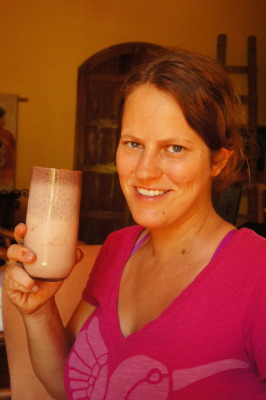
3. Grind the beans to a paste. This can be done in a coffee grinder, in a blender or using a mortar and pestle or a traditional “molcajete” (see photo). If using a coffee grinder or blender, be careful not to burn the motor: stop it often to stir the ground beans with a spoon. It also helps to jerk the machine back and forth while it is grinding. If using a mortar and pestle, you have the satisfaction of doing it the supposedly more authentic way, but it’s much more work and it’s easy to get the ground beans all over the place. You are done grinding only when you get a shiny paste. If it’s still a powder, you are not done yet. This is critical, since you want to extract the cocoa oil from the beans.
4. Combine the ingredients in a blender. Add the cinnamon, vanilla, honey to taste (add enough, or it will be bitter), and milk. Blend well and check that none of the paste is stuck to the bottom. This step is traditionally done with a “molinillo” – a wooden stick that is rotated by moving the hands back and forth.
5. Pour into glasses and enjoy your heavenly creation. Some people prefer straining the drink before enjoying it, but I like the added texture and nutritional value of the residue from the cocoa beans. They usually float to the top, kind of like little chocolate chips.

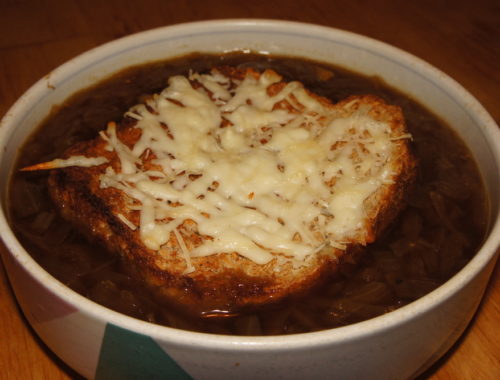
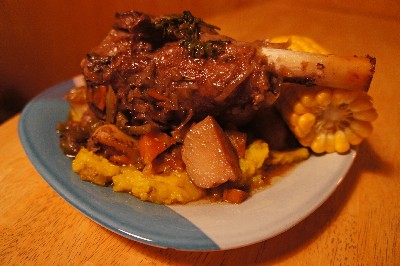
5 Comments
Colleen MacDonald
Very interesting blogpost and so informative!
Tal R
Nice 🙂
The concher looks similar to the wet grinders used in india to make idlii from rice paste.
Peta Kaplan
In Nicaragua I used to make what I called cacao nibs… Using fresh ground cacao, mix w a bit of raw coconut oil, touch of sea salt… Drop on wax paper in little “mounds” or tips…add chia seed on top, ground nuts to coat. Pop in freezer and voila = quick, yummy nutritious choc fix!
Gili
That sounds excellent, and in fact I think we might have tried some of your creations when we last visited you. By the way, broken roasted cocoa beans are commonly referred to as “nibs”.
Jessie
Thanks for this “how to make chocolate from scratch” article.
Nice sharing. Keep it up.